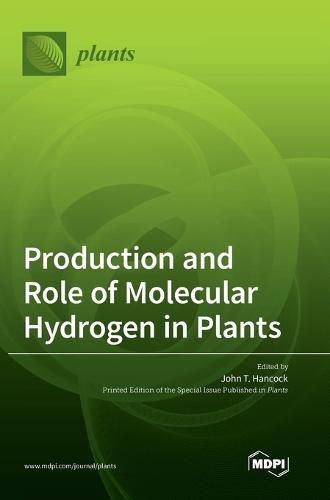Readings Newsletter
Become a Readings Member to make your shopping experience even easier.
Sign in or sign up for free!
You’re not far away from qualifying for FREE standard shipping within Australia
You’ve qualified for FREE standard shipping within Australia
The cart is loading…






This title is printed to order. This book may have been self-published. If so, we cannot guarantee the quality of the content. In the main most books will have gone through the editing process however some may not. We therefore suggest that you be aware of this before ordering this book. If in doubt check either the author or publisher’s details as we are unable to accept any returns unless they are faulty. Please contact us if you have any questions.
Molecular hydrogen (hydrogen gas; H2) is gaining prominence in the scientific literature as well as the popular media. Early studies suggest the use of H2 treatment for a wide range of human diseases, from COVID-19 to various neurodegenerative diseases. Moreover, its biological activity also appears to have therapeutic and regulatory effects in plants. Accordingly, it has been suggested to be useful in agricultural settings.
H2 has effects on a range of physiological events in plants. It has been shown to have effects on seed germination, plant growth, and development. It has also been found to be involved in plant stress responses and to be protective against abiotic stress. It also has beneficial effects during the post-harvest storage of crops. Therefore, its use in the agricultural setting has great potential as it appears to be safe, with no toxicity or harm to the environment.
One of the conundrums of the use of H2 is how it induces these effects in plants and plant cells. It is difficult to envisage how it works based on a classical receptor mechanism. There is evidence that it may act as a direct antioxidant, by scavenging hydroxyl radicals, or via enhancing the plant’s innate antioxidant system as a signaling molecule. It has also been reported to exert effects through action on heme oxygenase, cross-talk with other signaling molecules, and regulating the expression of various genes. However, how H2 fits into, and integrates with, other signaling pathways is not clearly understood. Future work is needed to elucidate the mechanism and significance of the interaction of H2 with these and other cellular systems.
$9.00 standard shipping within Australia
FREE standard shipping within Australia for orders over $100.00
Express & International shipping calculated at checkout
This title is printed to order. This book may have been self-published. If so, we cannot guarantee the quality of the content. In the main most books will have gone through the editing process however some may not. We therefore suggest that you be aware of this before ordering this book. If in doubt check either the author or publisher’s details as we are unable to accept any returns unless they are faulty. Please contact us if you have any questions.
Molecular hydrogen (hydrogen gas; H2) is gaining prominence in the scientific literature as well as the popular media. Early studies suggest the use of H2 treatment for a wide range of human diseases, from COVID-19 to various neurodegenerative diseases. Moreover, its biological activity also appears to have therapeutic and regulatory effects in plants. Accordingly, it has been suggested to be useful in agricultural settings.
H2 has effects on a range of physiological events in plants. It has been shown to have effects on seed germination, plant growth, and development. It has also been found to be involved in plant stress responses and to be protective against abiotic stress. It also has beneficial effects during the post-harvest storage of crops. Therefore, its use in the agricultural setting has great potential as it appears to be safe, with no toxicity or harm to the environment.
One of the conundrums of the use of H2 is how it induces these effects in plants and plant cells. It is difficult to envisage how it works based on a classical receptor mechanism. There is evidence that it may act as a direct antioxidant, by scavenging hydroxyl radicals, or via enhancing the plant’s innate antioxidant system as a signaling molecule. It has also been reported to exert effects through action on heme oxygenase, cross-talk with other signaling molecules, and regulating the expression of various genes. However, how H2 fits into, and integrates with, other signaling pathways is not clearly understood. Future work is needed to elucidate the mechanism and significance of the interaction of H2 with these and other cellular systems.